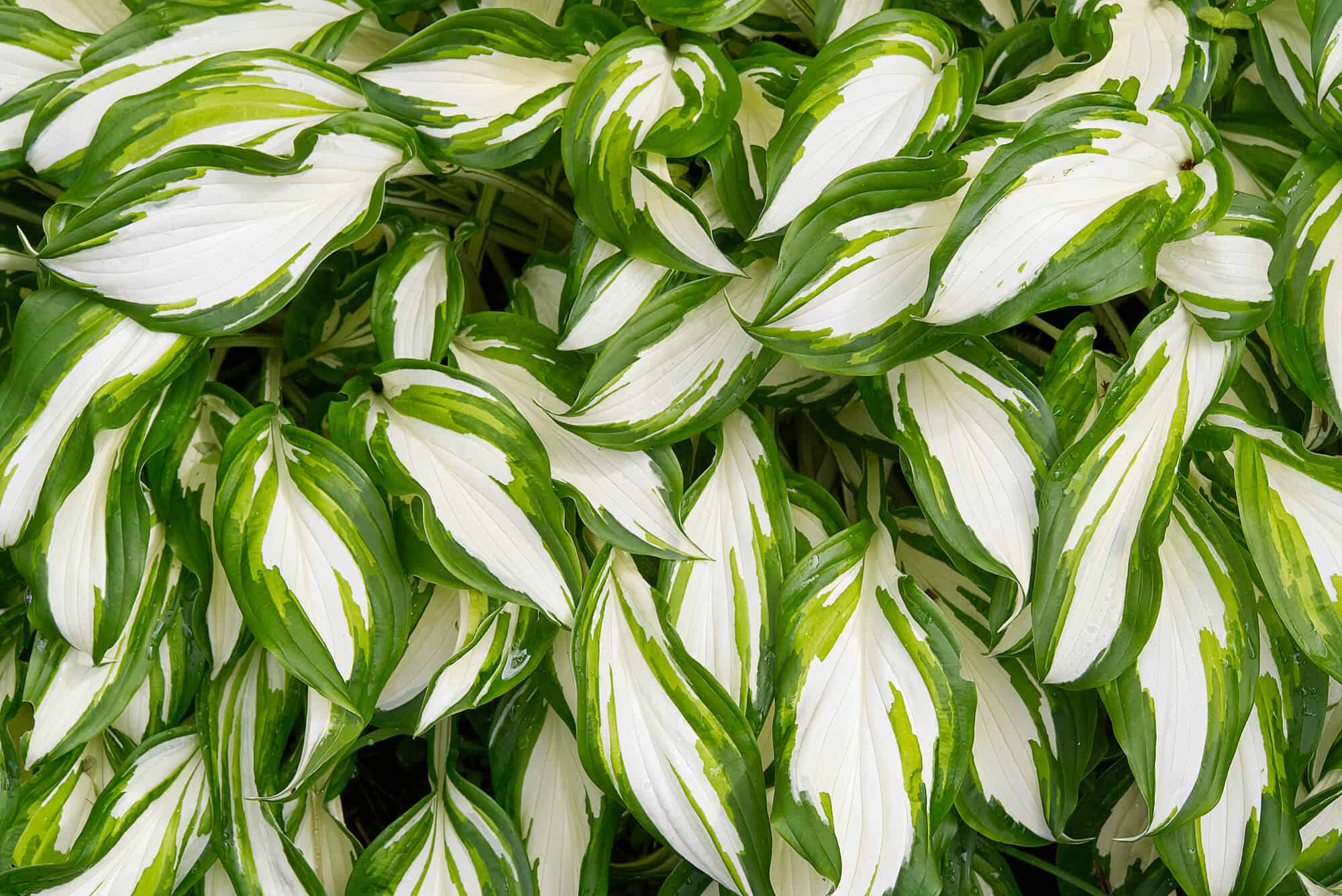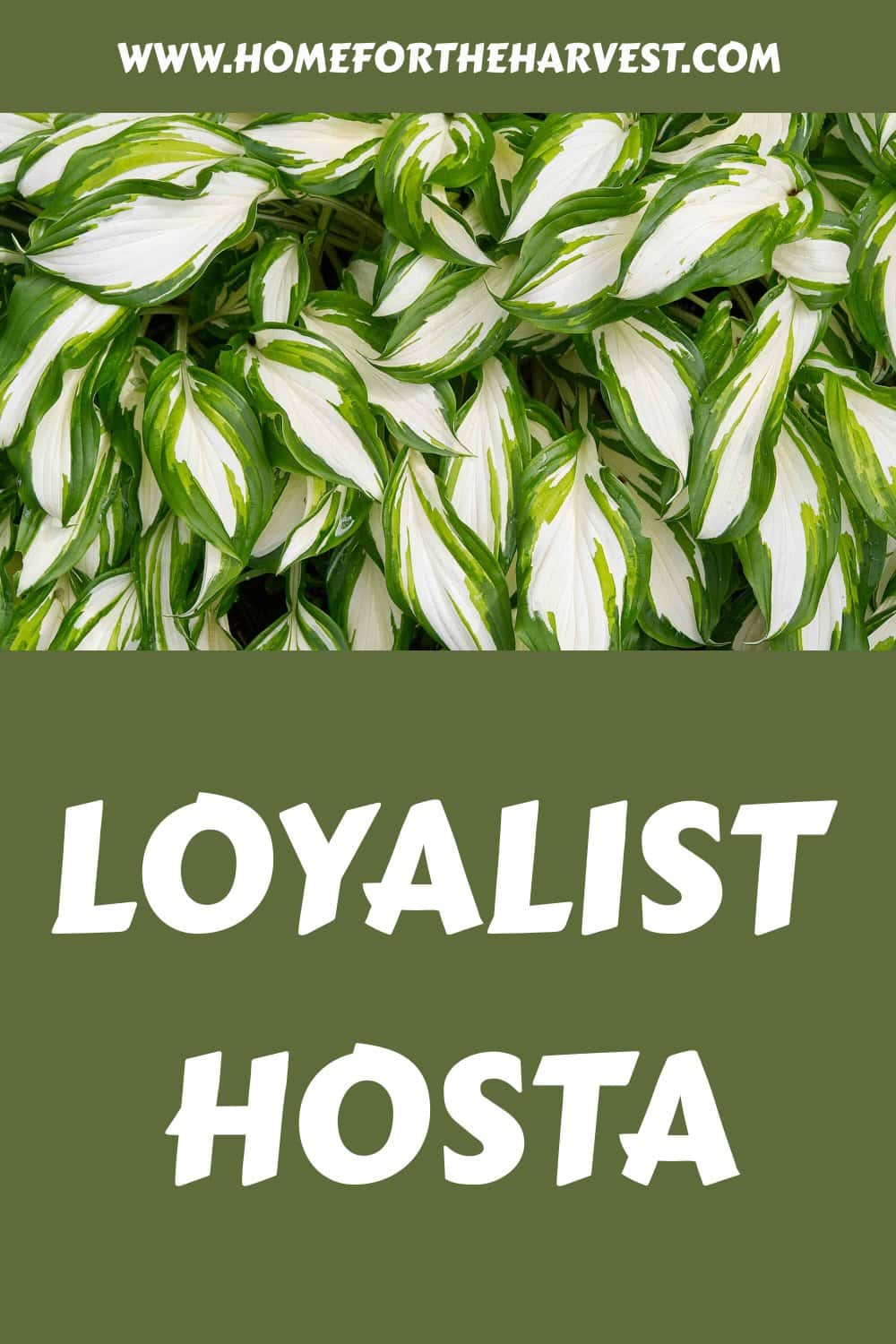As a fan of perennials, you can’t go wrong with a loyalist hosta in your garden.
Loyalist hosta plants have variegated leaves with dark green edges splashed with creamy white centers. Like most hostas, ‘Loyalist’ grows well in climate zones 3-9 in locations with partial shade, with morning sun being preferable to harsh afternoon sunlight. These plants should be watered regularly for the first year after planting but tend to become quite drought-tolerant if properly situated. Once established, the plants grow to be about 18-20 inches tall and 3-4 feet wide.
Loyalist hosta basics
Hosta ‘Loyalist’ is a popular cultivar of hosta plant known for its variegated green and white leaves. The edges of the leaves are a dark green tone with splashes of lighter green fading to white in the center. This medium-to-large-sized variety is commonly known as the opposite of the popular Patriot hosta, which has inverse coloration.
The ‘Loyalist’ hosta was bred as a tissue culture sport (natural mutation) of the very popular ‘Patriot’ hosta cultivar. ‘Loyalist’ has white leaf centers, while ‘Patriot’ has white leaf edges. The ‘Patriot’ hosta was itself a sport variegation of ‘Francee’ hosta (which is a sport of ‘Fortunei Albomarginata,’ et cetera).
‘Loyalist’ hosta was bred in Zeeland, Michigan, by G. van Eijk-Bos. The cultivar was registered in 1998 by Clarence Falstad of Walters Gardens.
Like most other hostas, this variety is very easy to grow. Loyalist hostas have pale lavender tubular-shaped flowers in midsummer.
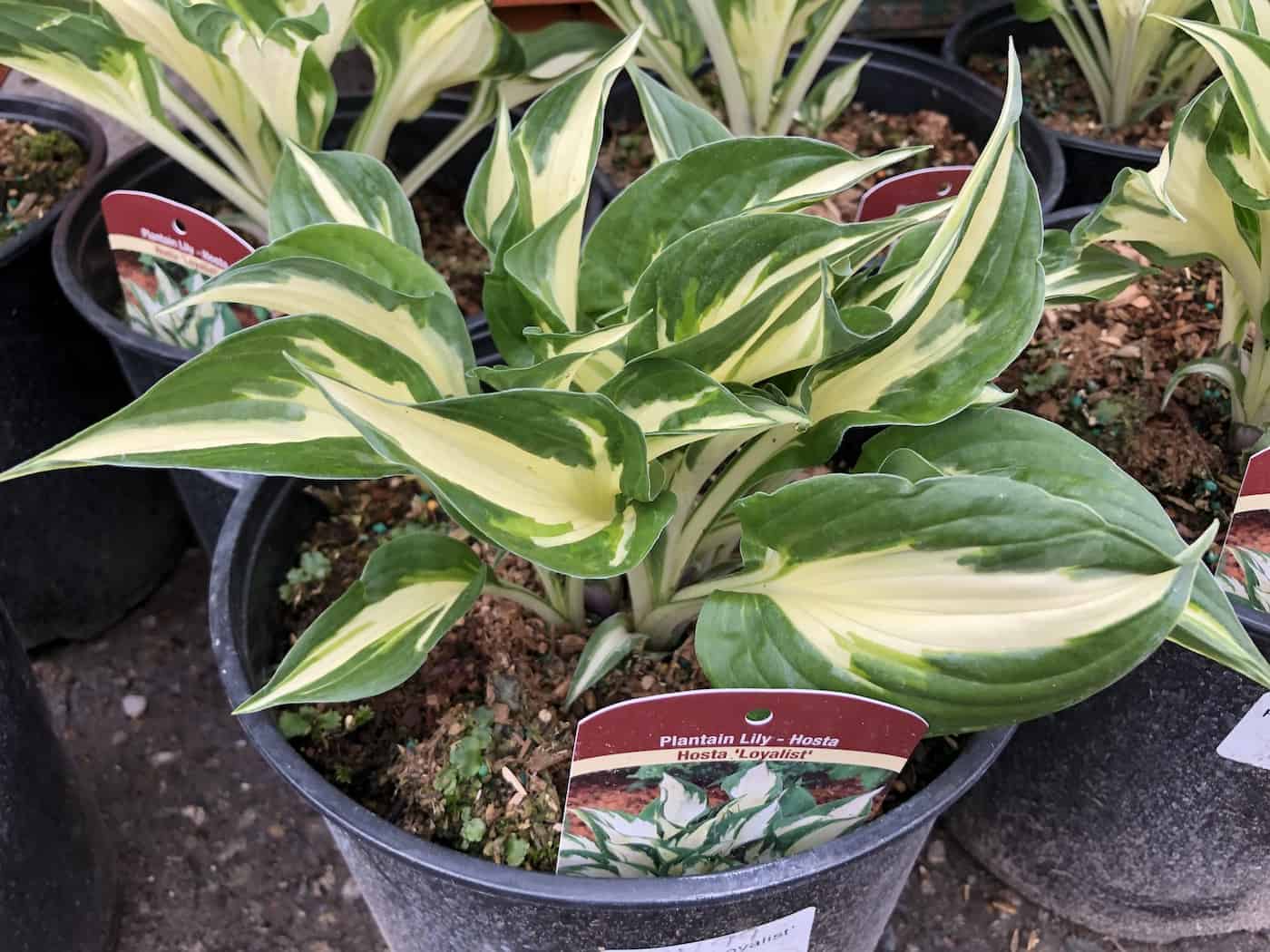
Where to plant Loyalist hosta
Plant ‘Loyalist’ hosta in a location that provides:
- Partial to full shade: Hostas thrive in areas with dappled sunlight or filtered shade. Avoid direct, harsh sun exposure.
- Moist, well-drained soil: Ensure the soil has good drainage to prevent waterlogging but retains moisture well. Amending the soil with organic matter can be beneficial.
- Space to grow: Give ‘Loyalist’ hosta enough space, as it can spread over time. Plant them about 18 to 24 inches apart to allow for their mature size.
- Protection from wind: Hosta leaves can be delicate, so consider planting them in a location sheltered from strong winds to prevent damage.
Suitable growing conditions will help your ‘Loyalist’ hosta thrive.
When to plant Loyalist hosta
The ideal season to plant your loyalist hosta is spring. You can start planting them by early spring before the weather turns too dry during early summer. Alternatively, early fall is also a well-suited time to plant your hosta.
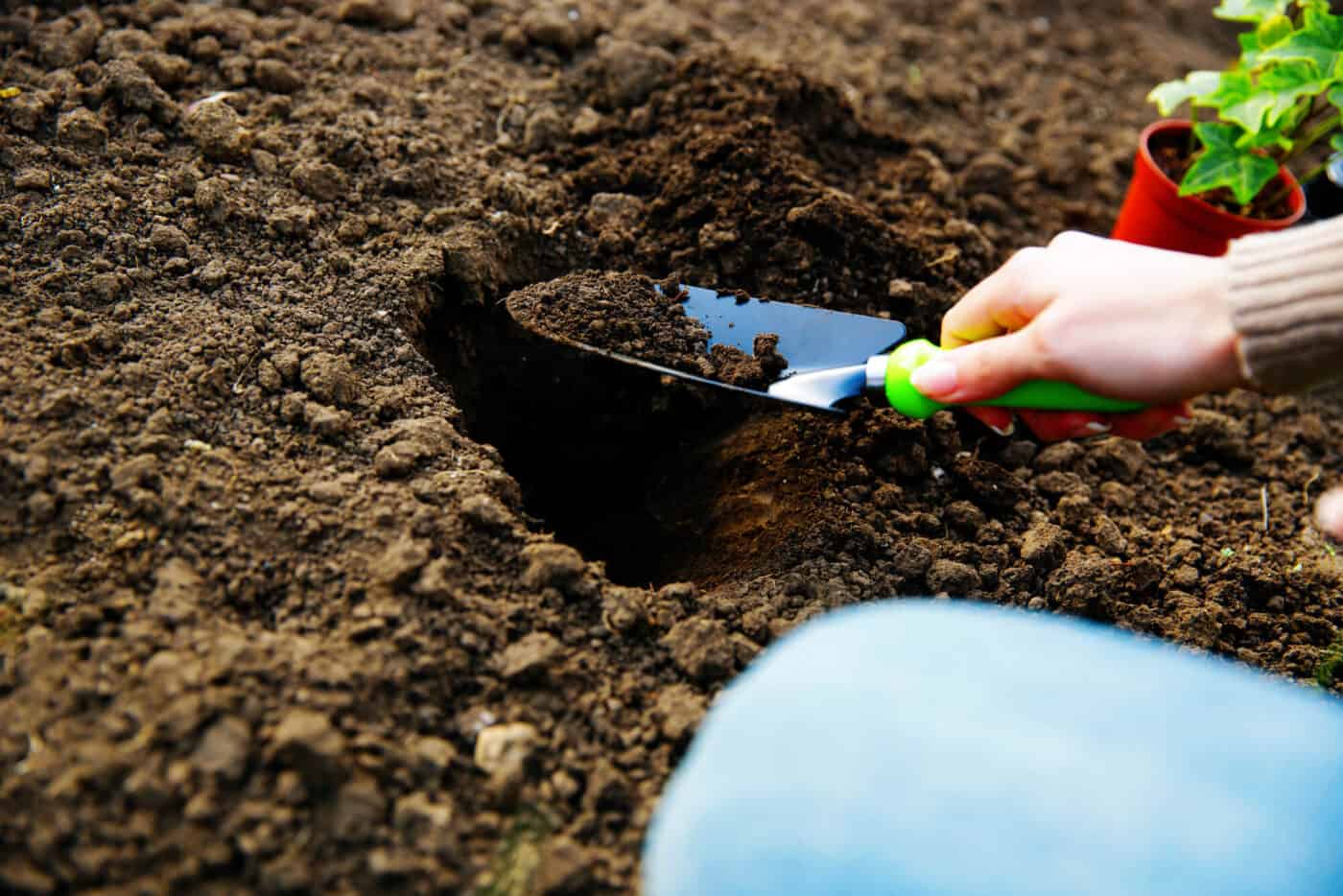
How to plant Loyalist hosta
With your Loyalist hosta at hand, here’s how to plant it in your garden.
- Find a space to accommodate the plant as it grows.
- Clear any existing planting debris.
- If the soil is poor, work some organic matter into the top 6″ of the area.
- Dig a hole to the same depth as the root ball and double its diameter.
- Take the plant out of its pot and fray its roots to allow better growth.
- Put the plant inside the dug hole and fill it back with soil while making sure to keep the sprouted leaf exposed on top.
- Add mulch to maintain moisture.
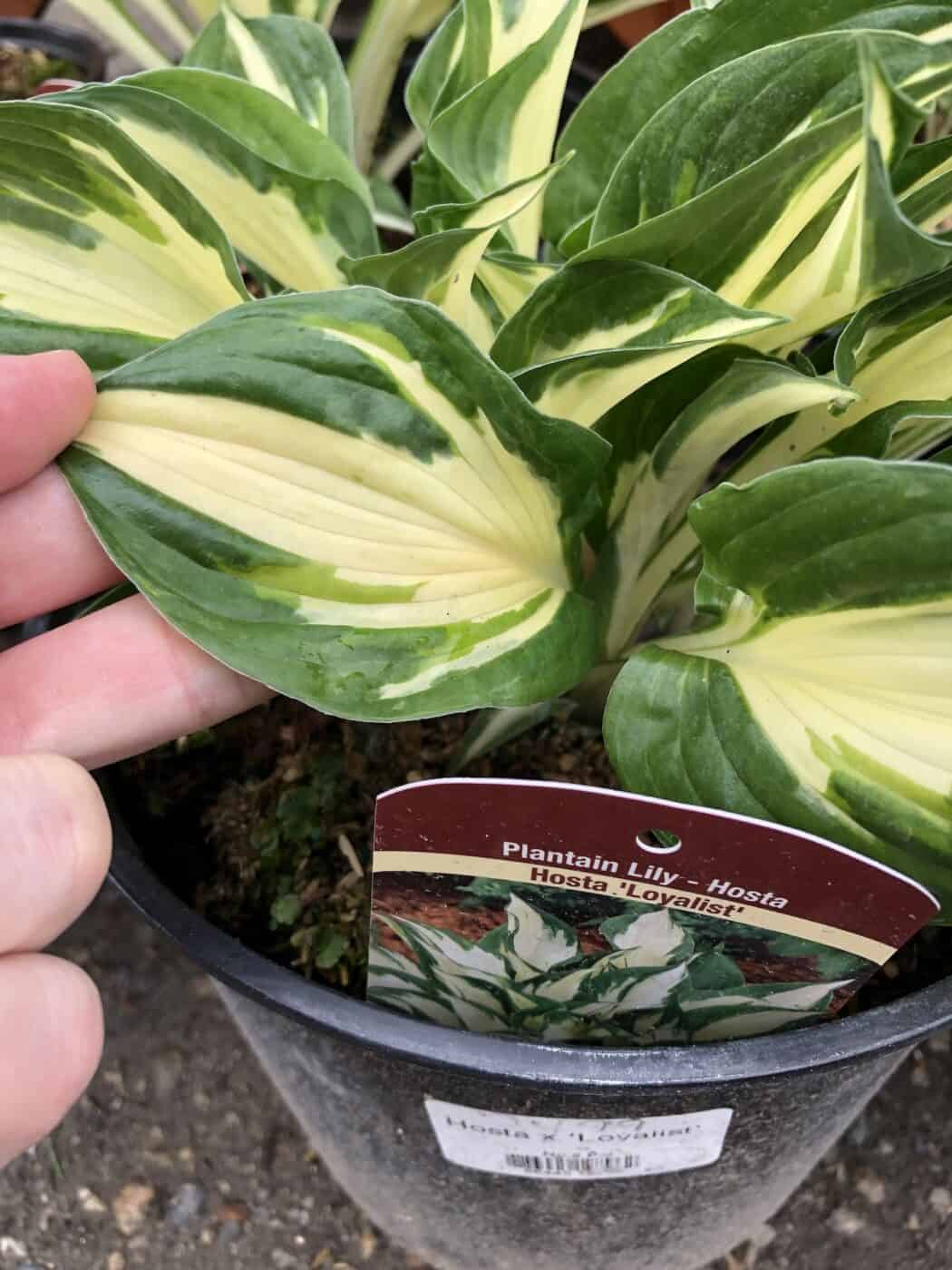
How to care for Loyalist hosta
Luckily, caring for Loyalist hostas is simple. Here’s what you’ll mainly need to look out for.
Water needs
Loyalist hostas usually require a weekly watering session. However, if it gets too hot and dry outside, you may need to water them more frequently. Overall, you want to keep their soil moist on most occasions.
Fertilizing needs
Loyalist hostas are most hungry during their growing season, which is in spring. During that time, you can spread a healthy amount of compost, organic, or nitrogen-rich fertilizer.
Once winter starts to roll out, which is when the hosta will become dormant, you’ll want to lay off the fertilizer. We recommend stopping the feeding supply about four months before the winter period begins. Make sure to lessen the amount gradually before completely cutting them off from fertilizer.
Pruning needs
The main pruning method for loyalist hostas mainly involves cutting off spent leaves and flower stems. Hostas are generally cut back to the ground in the mid-late fall.
Transplanting an existing Loyalist hosta
The best time to transplant hostas is in early spring or fall when the weather is cooler. Avoid transplanting during extreme heat or cold.
To transplant a hosta successfully, follow these steps:
- Prepare the new location: Select a new location with the same growing conditions (shade, soil type) as the current one. Ensure the soil is well-draining and enriched with organic matter.
- Dig the hole: Dig a hole in the new location that is slightly larger and deeper than the hosta’s root ball.
- Water the hosta: Water the hosta thoroughly a day or two before transplanting to help loosen the soil and make it easier to remove the plant.
- Dig up the hosta: Carefully dig around the hosta’s drip line (the outer edge of the foliage) to avoid damaging the roots. Dig deep enough to get the entire root ball.
- Lift the hosta: Gently lift the hosta from the ground, trying to keep the root ball intact.
- Divide if necessary: If the hosta has grown too large, you can divide it into smaller clumps. Ensure each division has healthy roots and foliage.
- Replant in the new hole: Place the hosta in the prepared hole in the new location. Position it at the same depth as it was in the previous spot.
- Fill with soil: Backfill the hole with soil and pat it down gently to remove air pockets. Water thoroughly to settle the soil.
- Mulch and water: Apply a layer of mulch around the base of the transplanted hosta to retain moisture and suppress weeds. Water regularly to keep the soil consistently moist for the first few weeks.
Remember, when transplanting, handle the hosta’s roots and foliage gently to minimize damage. Following these steps will help ensure a successful hosta transplant.
Plants that pair well with Loyalist hosta
Several choices of plants and flowers pair well with loyalist hostas. Here are some of them below.
- Pansy: Favoring similar weather conditions, pansies and hostas make an ideal grouping option. Pansies also add a pop of color to your green loyalist hosta background.
- Hydrangea: This flower species will make an exquisite pairing with the loyalist hosta. Their appearance elevates your garden’s appeal, and you’ll also attract a few pollinators on the way.
Pests and diseases that affect Loyalist hosta
Despite being easy-to-care-for plants, loyalist hostas may still become vulnerable targets to common garden pests such as snails and slugs. These gastropods can chew on the plant’s leaves, causing severe damage. To solve this issue, you’ll want to use bait to trap to get rid of the pesky pests lurking around your garden. A tuna can with a bit of fermented liquid in it usually works well.
Aside from these pests, fungal diseases such as anthracnose can infect your loyalist hosta. The main noticeable symptom is spotted leaves. You may treat this disease by spraying a fungicide. Nevertheless, if it’s too late, then the whole plant will have to be removed to prevent further infection.
Similar varieties
If you’re looking for hosta cultivars with a similar appearance to ‘Loyalist,’ consider these options:
- Patriot
- Minuteman
- Revolution
- Fire and Ice
- Regal Splendor
- Stained Glass
- American Halo
- Ice Cream
- Pandora’s Box
- Great Expectations
These hosta cultivars share variegated foliage with white centers and green margins, similar to ‘Loyalist.’


